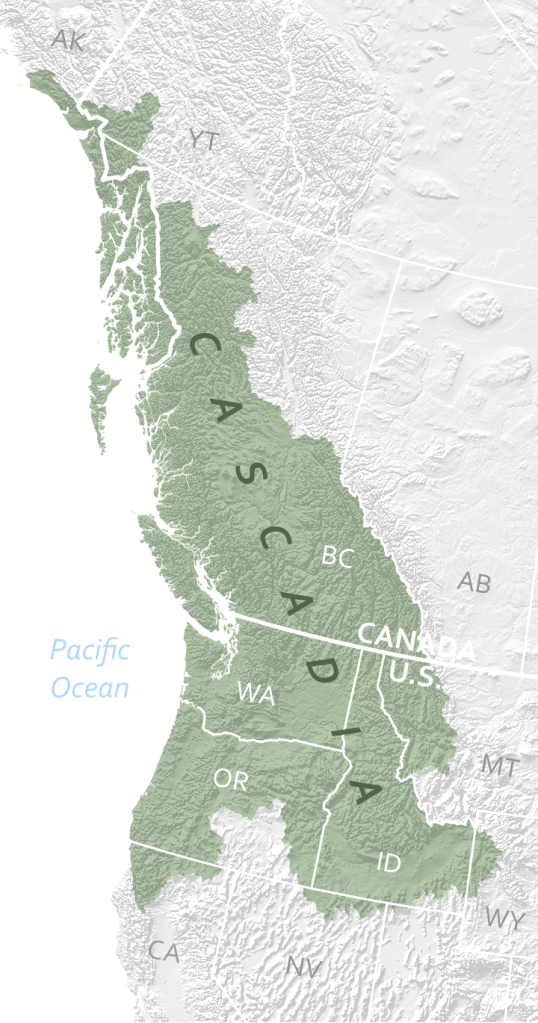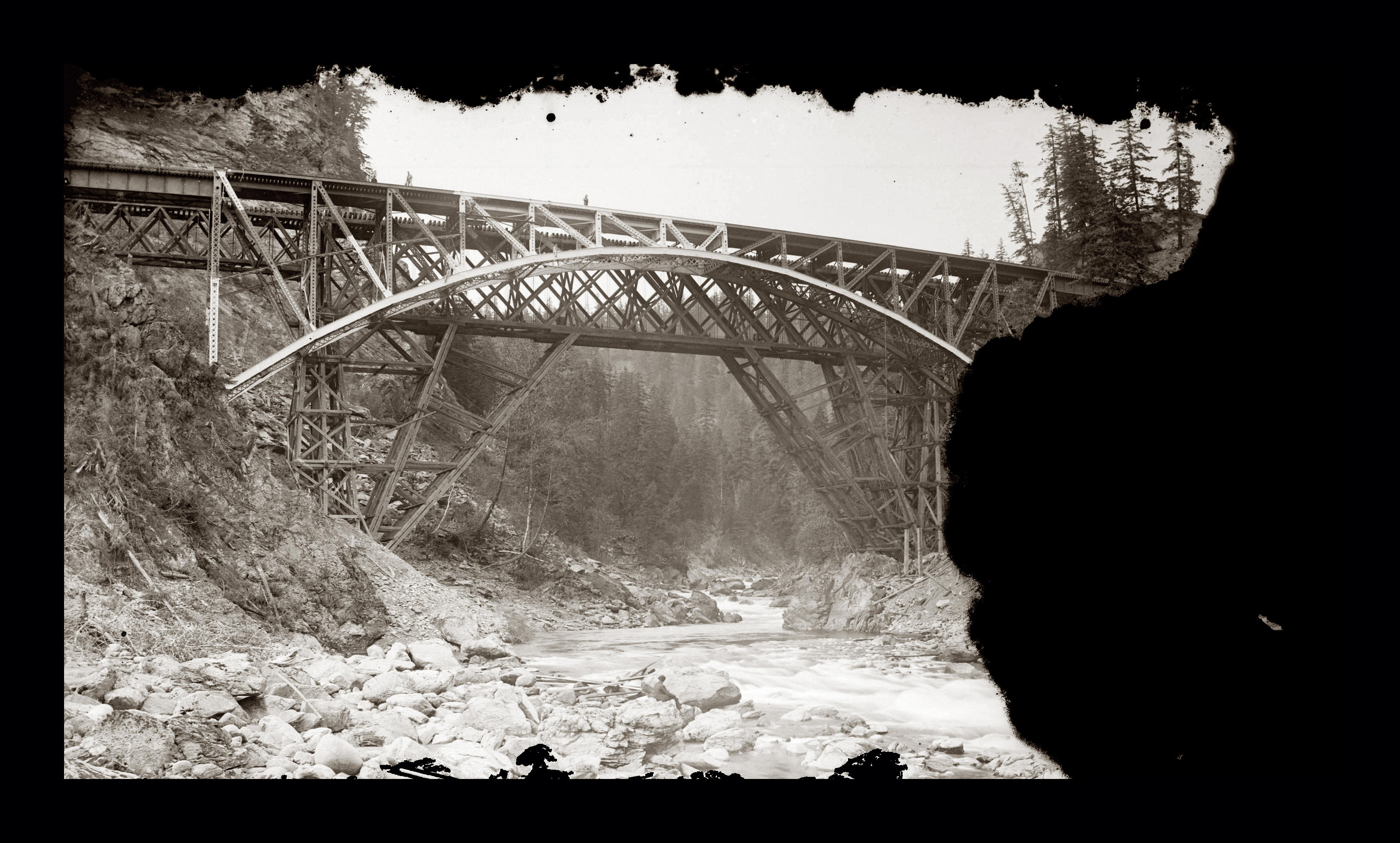The myth of the wilderness as ‘virgin’ uninhabited land had always been especially cruel when seen from the perspective of the indigenous people who had once called that land home. Now they were forced to move elsewhere, with the result that tourists could safely enjoy the illusion that they were seeing their nation in its pristine, original state, in the new morning of God’s own creation.
— The Trouble with Wilderness, William Cronin

The Cascadia Project is a wide-ranging investigation of and engagement with online digital archives of the Cascadia bioregion (Northern California, Oregon, Washington and British Columbia). The project uses the historic photographs from these archives in photo-montages and digital (single and mult-channel) video installations to render a diasporic landscape from the existing photographic record. The Cascadia Project treats the archival record as a cultural landscape of the region and as a record of its making. It views these historical recordings as strata in a geological map and uses photographic and cinematic montage to portray the layering of those strata. The project gives historical context to modern and postmodern photographic projects that engage the cultural landscape such as Vancouver’s photo-conceptual scene of the 1970s and the contemporaneous photographic projects of Robert Adams and Lewis Baltz. I chose the subject of the Cascadia bioregion because of my personal history as the progeny of California gold-rush era settlers and my participation in the 70s photo-conceptual scene in Vancouver, B.C.. Having lived on both sides of the Canadian/US border, I feel a special kinship to a region that crosses that border. The Cascadia region is especially suited for my investigation because of the compressed time frame from first contact of Europeans by people of the First Nations, especially in the northern reaches of the region and their rapid colonization and settlement of native lands, much of which occurred during the photographic epoch. Finally, The Cascadia Project is about place and locale. It is purposely regional and pays careful attention to the sensibilities of those who call it their home.
Cascadia, 2024, HD Video, 14:56 min





Click on grid above to view slide show
At the edge of the Shrunken sea
At the edge of the shrunken sea, 2023, HD video, 28:13 min.
At the edge of the shrunken sea is a video work that engages historical photography’s complicity in the cultural assimilation of the Indigenous people of the Salish Sea. The project interrogates the archival record chronicling Vancouver’s rapid growth from colonization to gentrification after the 1886 fire. It uses elements of collage and montage to extend its critical frame, encompassing erasure and displacement as an alternative to the accepted narrative of progress and empire. The video also shows the obvious cultural and social crosscurrents within the new urban experience between First Nations peoples and non-Caucasian settlers. Furthermore, the work looks at the critical period from the late 19th century to the early 20th century, when B.C.’s urban expansion, resource extraction and manufacturing employed the many various sectors of B.C.’s growing population.
The Bridge to Farewell






(Click on images above for slide show)
During the push to complete the Canadian trans-continental railroad in the late 1800s, a number of wooden bridges and trestles were erected to ford rivers and cross canyons throughout British Columbia. One of these temporary structures crossed the Fraser River to St. Mary’s Mission where, for over 100 years the children of Indigenous people were forcibly assimilated and often abused. Quite by accident, these images of railroad bridges and mission schools were damaged over those years rendering them as dark vignettes of colonial power.
Promised Land: The Unfinished Cinema of Eadweard Muybridge, 2022, HD video, 14:08 min
(Click on images above for slide show)





“Marta Braun argues, ‘Muybridge was not using his camera as an analytical tool at all but was using it for narrative representation.’ One could go beyond Braun in arguing not only that the individual sequences suggest narratives, but that whole stories are implied in the order in which he shot the motion studies of women.” -Rebecca Solnit, River of Shadows
When I read Rebecca Solnit’s book about Eadweard Muybridge I was taken by how much his photo-art world of 19th Century San Francisco reminded me of the competitive rivalries and experimentation of my own photo-conceptual scene in Vancouver a century later. Not only that but I was transported back to my grandparents era in central California in a way I had never before experienced. These revelations began what I now call The Cascadia Project and played a large part in my decision to return to the west coast after 45 years.